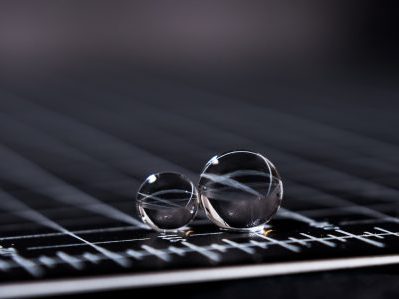Destructive otologic foreign body – dangers of the expanding bead
|
What’s KnownSuperabsorbent polymers (SAP), such as polyacrylamide, are water-soluble plastics with high absorption capacities that frequently are used in agriculture, within potting soil, and as disposable diaper filler. Of late, the material has been used to manufacture children’s playthings. Toys made of SAP include firm colorful beads, known as jelly beads, initially sized at 0.1 cm to 0.2 cm in diameter that swell to 0.67 cm to 1.09 cm in diameter when exposed to liquid. Foreign bodies inserted into the external auditory canal have been associated with an estimated 280,000 visits to the emergency department from 2008 to 2012. Now, jelly beads also represent an aural foreign body risk. What’s NewIn the first case described in the letter report, a girl returned for care after an external auditory canal (EAC) granulation was not responding to oral antibiotics and ototopical drops. The girl repeatedly denied having inserted a foreign body (FB) into her ear. Ten weeks after her first visit, computed tomography imaging showed bony erosion; magnetic resonance imaging revealed a 9.8 cm spherical foreign body that was surgically removed. She suffered profound sensorineural hearing loss. The second patient told clinicians he had placed toy beads in his ears. The blue bead expanded within the canal, causing subtotal tympanic membrane perforation, partial ossicular chain erosion, and resulted in reversible hearing loss. In cases of persistent granulation in the ear, an FB reaction should remain on the differential diagnosis. Malleable beads lodged in the canal should not be treated with ototopical drops. Urgent otolaryngology evaluation is indicated, the authors conclude. Questions for Future ResearchQ: What is the actual pressure/force that the expanding bead exerts on the external auditory canal? Source: “Destructive Otologic Foreign Body: Dangers of the Expanding Bead.” M. Sterling and P. Mudd. Published online by JAMA Otolaryngology–Head & Neck Surgery on Aug. 4, 2016. |





